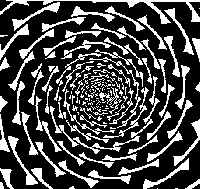History and Pattern (diachrony and synchrony)
Some comments
The concept of culture, like the concept of language (langue), is inextricably tied to considerations about both history (as destructive and constructive) and pattern (as absolute and as whole). The analytic tension was best discussed by Saussure but underlies also all American anthropological theorizing about A culture.
It would appear that we are now in a period where the vagaries of history and political struggles are more interesting than the powers of patterned wholes. Still, the fundamental issue that fascinated pattern theorists, whether in gestalt psychology, systems analysis, structural anthropology, etc., will not go away since it remains obvious, not only that all human productions change through evolution, diffusion, population movements and political controversiers, but also that when humans start interacting with each other separately developed productions become context to each other, and that the conjunction of these productions make something new, a whole (pattern, gestalt, culture) which, if massive enough, will lead to reinterpretation of any new production in its terms.
First, take this classic image from early gestalt experiments:
 The power of such an image does not
lie in the historical process of its production but in the subconscious neural
process of perception. In this process the whole first imposes itself (and all
but oblige us to perceive this as a spiral). In a secondary, analytic
process, we can become conceived that this image is "really" an image
of concentric ropes (see Fraser 1908).
It is only in a tertiary moment that fully denies our experience of the image,
that we can focus on the process of its making in history (and in the political
processes that might have allowed for its making).
The power of such an image does not
lie in the historical process of its production but in the subconscious neural
process of perception. In this process the whole first imposes itself (and all
but oblige us to perceive this as a spiral). In a secondary, analytic
process, we can become conceived that this image is "really" an image
of concentric ropes (see Fraser 1908).
It is only in a tertiary moment that fully denies our experience of the image,
that we can focus on the process of its making in history (and in the political
processes that might have allowed for its making).
One could work with a picture from a actual Gothic cathedral, a picture of a model of THE Gothic cathedral that would highlight the properties of the style, and an account of the place of the Gothic style in late 20th century American political culture (possibly represented graphically by people in Arab or African dress visiting a Gothic cathedral as tourists). Obviously we can say, considering such a case, that the "meaning" of Gothic cathedrals has changed. But we must also face that "the Gothic" is a pattern, that "late 20th century African dress" is another pattern, and that, together, they make a new pattern which could then be modeled. In this new pattern (to be labeled, perhaps, "The Global Village," the historical source of each sub-pattern may be only of importance to some antiquarian (though the search for the source might become a part of the pattern).